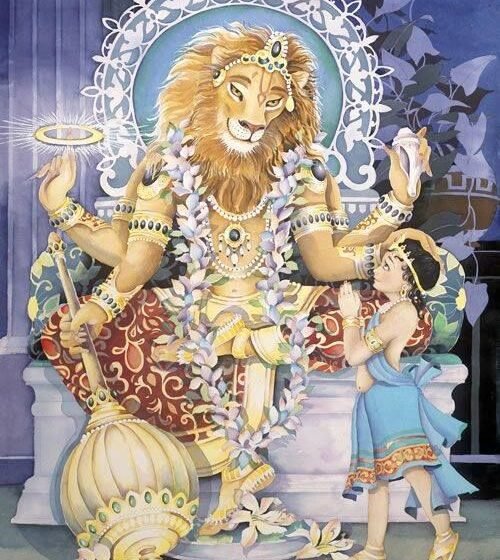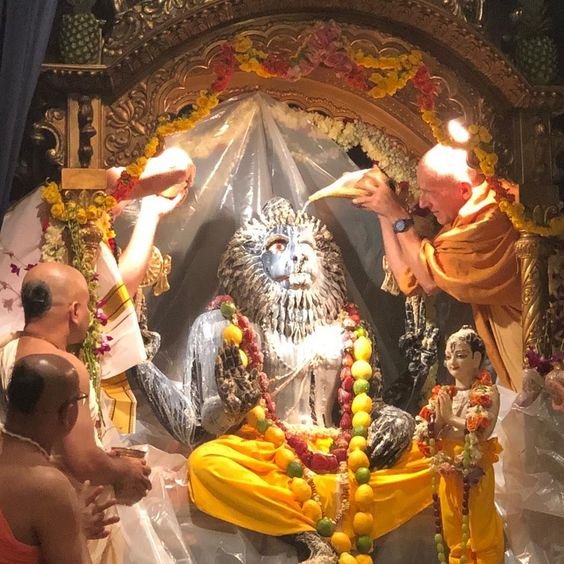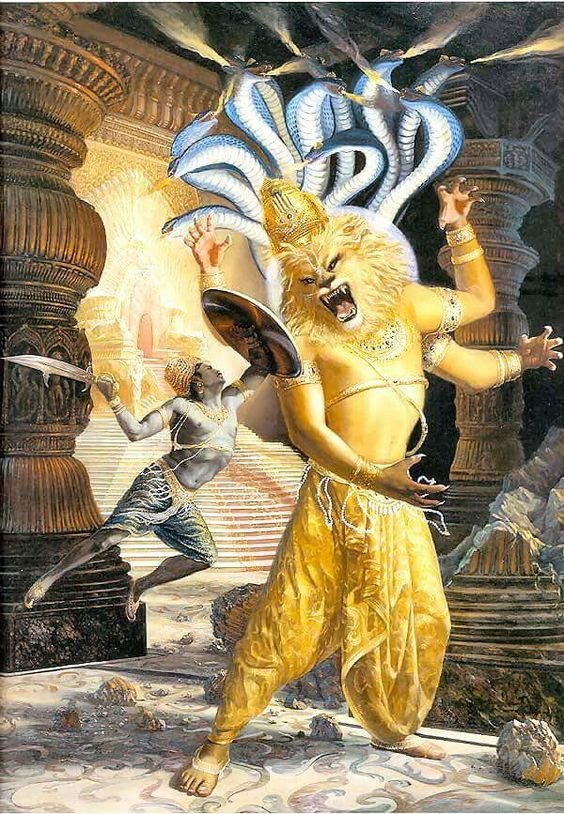Unveiling the Mysteries of Narasimha Purana: A Deep Dive into Uppuranas

Among the Upapuranas, the Narasimha Purana is a critically placed text and forms a highly regarded scripture in the Hindu literary tradition. This mythological text was written thousands of years ago and gives a vast amount of knowledge about cosmology, along with genealogy myths and aspects of devotional practices; it is specifically filled with tales centred on the life of Lord Narasimha, the fourth avatar of Lord Vishnu. The Narasimha Purana is of great importance in Hindu culture and is perhaps the most important document that influences heavily the religious beliefs, rituals, and culture of that time.
This article attempts a study on the Narasimha Purana through its historical moorings and mythological narratives, the theological constructs and pertinence to the evolution of Hindu philosophy and culture.

History
In traditional authorship, the Narasimha Purana is ascribed to Vyasa and dated to somewhere around the late 5th century. Variously edited by scholars such as R.C. Hazra, the central text is indeed from around this time, while the additions serve to momentarily reflect new religious and cultural situations. Its semi-canonical importance gives the Purana dynamic and adaptive approaches that are hallmarks of Puranic tradition.
The translation of the Narasimha Purana across the subcontinent into Telugu during the 13th century speaks to its remarkable reach and diffusion among speakers of different languages and cultures from every corner of India. Such popularization was vital for the staff’s survival and lasting importance.
It has been traditionally used in many commentaries and religious talks. The teachings were from Narasimha Purana and were followed and adopted by most of the scholars and saints in their teachings and writings which have formed a fundamental aspect of both the development of Hindu philosophy and Theology. The enduring legacy of this text resides in the role it has played in the transmission of religious and cultural knowledge.

Mythology
Central in the Narasimha Purana is the story of Lord Narasimha, the man-lion incarnation of Lord Vishnu. It’s a tale of divine protection with victory over evil. The text elaborates on the story of Hiranyakashyap, a demon king awarded a boon of invincibility, and his godly and adherent son Prahlada, insistent on following Vishnu his way.
Throughout, the life of Prahlada, there is a series of divine interferences in which the father failed to succeed in killing him. Finally, it was Hari, in the form of Narasimha, who was neither man nor beast, which availed at twilight on the doorstep, disobeying all the conditions of the boon of Hiranyakashyap, and saved Prahlada. Narasimha in this form killed the demon king: hence, the symbol of divine power and the strength of devotion is unflinching.
The Narasimha Purana itself goes on to describe the various other avatars of Vishnu, like Matsya (the fish), Kurma (the tortoise), and Varaha (the boar). Every story is emphatic in some manner or the other on divine intervention and the further aspect of the house of Vishnu’s assuming forms repeatedly, incarnating himself to re-establish dharma, to save the righteous. How adaptable and versatile divine power is comes to the fore in these stories.

Gunas
Three Gunas, qualities, are the cornerstone of the entire Hindu philosophy and cosmology. Narasimha Purana elaborates: sattva is goodness, rajas is passion, and tamas means ignorance; these pervade all beings and objects, determining their behaviour, built, and spiritual path.
Sattva is that which leads to spiritual enlightenment because it is virtue and wisdom. Rajas, on the other side, is that quality linked with activity and desire and in most cases leads to attachment and consequently suffering. Tamas is associated with darkness and inertia, hence bringing about confusion and delusion. The Purana insists on the cultivation of Sattva through right action and devotion if there is to be emancipation (moksha).
These all set up a foundation through which one can understand how these qualities function within the different aspects of an individual’s life. The dominance of certain gunas in an understanding of oneself allows one to pick up practices that would work to the balance and elevation of the inner nature. This brings an impetus to stay self-aware and disciplined in living.

Lord Narasimha, although the chief god in the Narasimha Purana, other important gods arise in the pantheon of this text, like numerous Vishnus, Shivas, and the goddess Lakshmi and Saraswati. The Purana to glorify the ten avatars of Vishnu, called the Dashavatara, concludes with the direct incarnations of Rama, Krishna, and Buddha.
The story of each avatar reveals his divine activities and functions within his cosmic role. The stories of the individual avatars therefore vary widely, from the Ramayana story of Rama to the Mahabharata of Krishna, but in the Purana, these tales reveal some diversity and some richness of his combinations.
In addition to Vishnu’s incarnations, Purana also contains a description of the characterisation and attributes of other gods. The destroyer and regenerator have been represented in the form of Shiva; that is, as the one who transforms and also releases. The goddesses Lakshmi and Saraswati are worshipped as their companionship signifies wealth, knowledge, and wisdom.
The interactions among these deities reveal that divinity, in Hinduism, is multi-layered and multi-faceted. The portrayal of these deities in the Purana generates bhakti or devotion by creating a structure where the many divisions among various manifestations of the divine can be understood.

Authors
Though the Narasimha Purana is ascribed to Vyasa in very many traditional sources, the Purana as a whole shows the style and content of such contributions to emerge from the collective and evolving tradition of which it is a part. Through centuries, the text grew with various scholars and sages contributing to its preservation and propagation.
Most of these have been transmitted by oral tradition, and the textual versions came much later. These manuscripts, through the dedicated efforts of great scholars, were copied and preserved with meticulous care. Later, they found their place in the ancient libraries and temples all over India.
The Purana has attracted a whole lot of commentaries and interpretations that now adorn and deepen the knowledge one may have in regard to its philosophical and theological dimensions. These comments on the text throw greater light on the teachings of the text, providing a historical context of understanding to the later readers. But for the collaborative work of the scholars, both the first and the second life of Narasimha Purana would have gone into oblivion just because the old commentary cannot serve contemporary readers.

Therefore, the chapters that are comprised in a Narasimha Purana are 68 in number and structured in sections about Srishti (creation), Vamsha (genealogy), Bhugol (geography), Haryavataradi (avatars of Vishnu) along with Varnashramadharma (duties of the different social classes). All these sections are quite in-depth and complete.
The verbatim text of this Purana in the form of versified sentences was too highly scholarly in poeticism and philosophy. This text contains all sorts of topics from cosmology and genealogy to didactics and spiritual instructions. The linguistic and literary abilities of the text match the level of reading sophistication of Indian scholars and sages.
Worship
The worship connected with the Purana of Narasimha is variated in rich form, having theological significance. A devotee of Lord Narsimha, while performing the worship or festival, recites the explicit verses or hymns existing in the Purana as a source of the worship. The incantations invite the different protective transcendental manifestations of Narasimha; that is, spiritual as well as physical protection is offered to the worshipped ones.
The Purana elaborates on different rituals, from the laying of altars and the making of the fire for the fire sacrifices to the symbolic meaning of the individual offerings. It is quite strong on purity and devotion in worship and advocates a life led righteously with spiritual discipline.
During festivals, especially Narasimha Jayanti, the temples of Narasimha, there are held important ceremonies. The devotees fast and chant prayers, and make community feasts, thereby mostly showing values of unity and devotion. The rituals are usually concluded with a read-through Prahlada Charitra meant to help remember intransigent faith.

Legacy
The Narasimha Purana occupies an enviable position in the cultural heritage of Hinduism, influencing religious experience, art, literature, and architecture of temples. Important pilgrimage places in India, like the Ahobilam temple in Andhra Pradesh, have drawn inspiration from the narratives and iconography of the Puranas in constructing these temples dedicated to Narasimha.
Indeed, its teaching serves to inspire devotees and scholars, to this day stepping out for timeless values of devotion, righteousness, and divine protection. Its storytelling has inspired a number of art forms, hence continuing to keep the stories alive and vibrant.
Moreover, the Narasimha Purana should also reflect the ancient Indian scientific thought, particularly that of cosmology and geography. The creation in the universe, the cyclic nature in time (yugas), the cosmos, and the fine astronomical and geographical knowledge should be described in the Purana.
In addition, the treatise gives an insight into the holistic approach to health, where the ancient treatment medicine, Ayurveda, bases its treatments on the interdependence of the physical, mental, and spiritual well-being of a human.

Conclusion
The Narasimha Purana is one of the important texts of the Hindu tradition, playing in deep spiritual realizations and mythological narratives. Its elucidation of devotion, divine intervention, and dharma echo through time, making it a treasured scripture for the centuries ahead. This scholarly approach to the Narasimha Purana is vital in gaining access to the historical, theological, and cultural importance of this work to ensure it remains part of the discourse on Hindu literature.
It is through this perspective that one can fathom the depth and fullness by which this ancient scripture of the Narasimha Purana relates to its historical context, mythological stories, and lasting legacy. Its teachings bring lessons in faith, righteousness, and the divine that shed light on spiritual guidance in this fluctuating environment.


